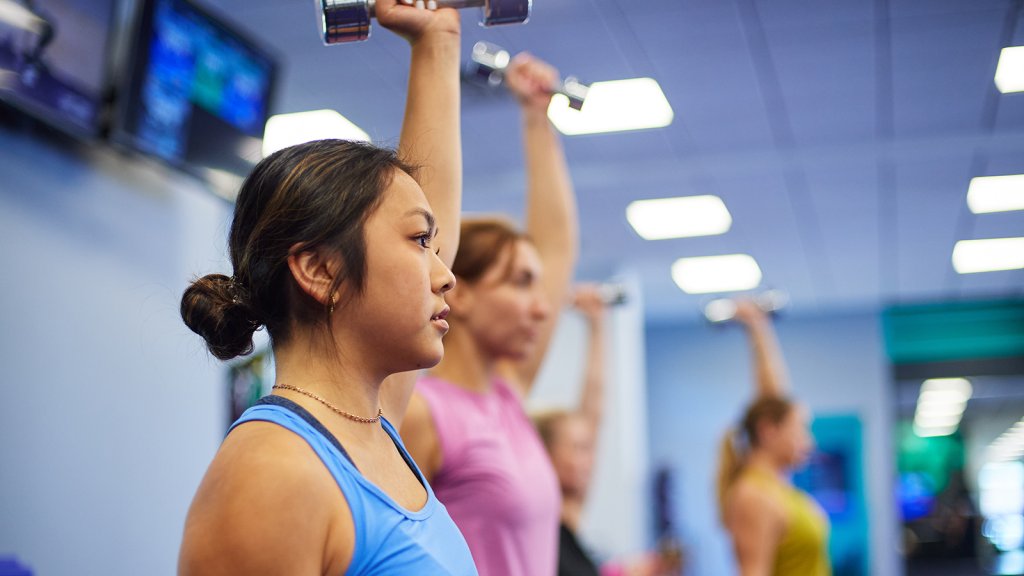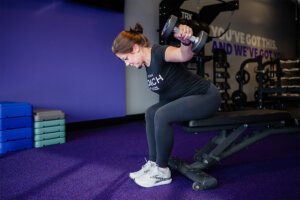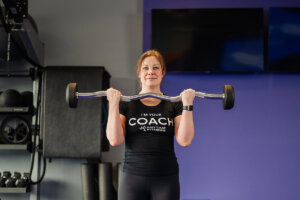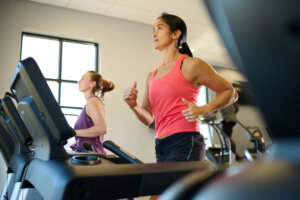We’re sure you’ve read articles about the risks of sitting all day, from chiropractors, doctors, researchers and more. But have you ever seen an article about the risks of standing all day? Probably not, and if you work on your feet all day, you probably weren’t on edge about it, except for the occasional bout of sore ankles or fatigue. Unfortunately, there are about as many risks associated with standing all day, as there are sitting!
Do you stand a lot in your everyday life? Are you in the hospitality industry, or a cashier at a retail shop? Maybe you’re a teacher or a nurse and you spend most of your time on your feet, or a daycare worker who’s chasing kids all day. Or are you a construction worker who’s always moving around? Standing all day, especially on hard floors, can be a tall order. Whether you spend all day in a standing position without moving too much, or you’re constantly running around throughout your work day, working on your feet can be exhausting! It can make joint stiffness from arthritis much more painful, and studies have shown it can affect your blood pressure. It can also lead to swelling, leg cramps, poor circulation, fatigue, back pain, particularly low back pain, and most obviously, sore feet.
For example, you might be familiar with plantar fasciitis. Plantar fasciitis is a common condition that happens when the ligament that connects your heel bone to your toe bones gets inflamed. Plantar fasciitis happens as a result of prolonged pressure or tension on the foot, and it’s common for people who spend all day on their feet, particularly on hard floors. Thankfully, studies have found that strengthening the lower extremities stress can help people reduce their risk for plantar fasciitis – and that’s what we’re about to do in this workout!
Another risk of standing all day is getting in the habit of standing with bad posture. Keeping our spine straight and our shoulders back isn’t top of mind for most of us when we’re fatigued at the end of a long shift. But poor posture can strain your muscles and tendons and stress your joints, particularly when you’re exhibiting poor posture for hours at a time. Studies have shown that bad posture over a long time can lead to imbalances or even conditions like musculoskeletal disorders. (Even desk workers need to make sure they’re properly supporting their neck and spine!)
In addition to physical conditions, standing all day can lead to varicose veins. Varicose veins are a common issue, particularly in the lower extremities. They happen because weakened or damaged walls in your veins can cause blood to pool and even flow backwards. When this happens, veins may grow larger and become distorted, resulting in varicose veins. They usually appear later in life, and in the lower limbs. Varicose veins aren’t typically dangerous, but they can be painful and lead to poor circulation, and standing all day can make them worse. Studies have shown that standing all day increases the risk of varicose veins. If you already have varicose veins, it’s a good idea to take intermittent breaks to sit and stretch while you stand.
Ready to throw out your standing desk yet? Not so fast. Alternating between sitting and standing is still good for you, especially if it prevents you from sitting a lot for long periods of time. It’s standing all day that we’re worried about (so if your standing desk has been set to “stand” for months now, bring it down for a while, please!). If your workday involves long days of standing without much of a break, we’re not asking you to quit your job or worry – we’re just here to help! Thankfully, there are several things you can do to reduce the impact of long periods of standing, and some of them are easy adjustments to make.
First of all, take a look at your shoes. Do you walk around in high heels all day, or are you wearing a pair of shoes with solid arch support and comfortable soles? Wearing the right shoes can make the difference between foot pain and happy feet! When selecting shoes for work, you should think about three things: your daily tasks, company dress code, and of course, your feet! We’re not aiming for style here, we’re aiming for comfort over long periods of time and sore feet relief. Before you order them, ask your coworkers for recommendations and make sure they’ve got arch support! If you’re in love with your current shoes, you can shop for supportive insoles as well. Studies have also shown that compression socks can help reduce swelling and discomfort. If you stand in one spot of your workplace for most of the day,we recommend using anti-fatigue mats on hard surfaces as well.
What if you’ve got the shoes, the mat, and the socks, and you’re still experiencing pain or fatigue? We’ve got your back, and actually, your entire body! While your feet support you, your entire body is involved when you’re in a standing position, and that includes good posture. Which means it’s time for some information on functional training. What is functional training? It’s a type of training that prepares and strengthens your body for everyday activities. Functional training focuses on the movement patterns found in everyday activities. Unlike other training programs that might focus on strengthening certain muscle groups or improving your mile time, functional training’s goal is to improve and make our everyday movement easier. Of course, that involves strengthening the muscle groups in your body, but not in the same way a bodybuilder’s training program would. Functional training is really all about functional movement and whatever that means to you!
To get you started with functional training, we’ve got a workout below to help you get started with functional movement. It’ll improve your overall strength and work your core, legs, and endurance to help fight those demanding jobs that take a toll on your feet, legs, and back. Our recommendation is to try it three times a week, and see how it improves your movement at your workplace. We think you’ll notice an improvement in how you feel at the end of the day!
We’re going all in on this workout: Complete each ] set and then take a short rest before moving to the next functional training exercise. This can be done for time, but don’t let that compromise your good form! Just keep the movements nice and steady and try to finish as fast as you can.
Functional Fitness Exercises for Standing
Single Arm Farmer’s Carry
(2 laps each arm)
Walk a lap around the gym holding a kettlebell to your side. For the best results, keep your posture straight and don’t allow the kettlebell to lean on your thigh. This is a great way to strengthen your shoulders and the muscles around your spine, and to practice protecting your neck. If you’re in hospitality, construction, or if you’re just someone who carries things all day, you definitely don’t want to skip this exercise, as it can help prevent injury. Start with the kettlebell in your right hand for two laps, followed by holding the kettlebell in your left hand.
Overhead Walking Lunges
(50 lunges each leg)
Hold a 10 to 25 pound plate, depending on your fitness level, over your head while doing walking lunges. Make sure you pull your shoulder blades back, lock your elbows and engage your core muscles. As you lunge, don’t let your knees go farther than your toes. Tip: If the weight is too much for you, try regular walking lunges. Or, you can change your starting position so that you’re holding smaller dumbbells in your left and right hand, and keeping them at your sides. This is a great way to strengthen your walking lunges and eventually work your way up to an overhead weight.
Two Point Rows
(50 rows each arm)
What is a two point row, you ask? It’s very similar to a single-arm row, and depending on your personal trainer or coach, you might have already performed this move. It’s called a two point row because you balance on two points: your feet on the floor! On that note, make sure you ground from your heels, not your toes. Traditional single-arm rows have you balancing with one arm on a chair or a bench – that’s your third point of contact. For two point rows, you bring your non-working hand down to your knee, which engages more of your core. Your starting position will be with your feet on the floor, about one foot closer than they would be in a lunge position, grounding through your heels. With your right foot in front, bring your right hand down so that your right elbow rests on your right knee. Plant yourself on the floor through your lower body, and with your left arm, pull the weight up until it’s in line with your chest. Make sure you’re using your back muscles, not your shoulders. For good form, keep your back straight and avoid rolling your shoulder back. Keep the size of the weight to about 20-30 lbs. We recommend alternating sides every 30 seconds.
Single Leg Bench Squats
(50 squats each leg)
Single leg bench squats are an amazing – and challenging – functional exercise! All you need is a chair or bench and your bodyweight. You’re going to be working your hips, thighs, glutes and lower back like you wouldn’t believe! To perform this move, start by standing with the chair or bench behind you with your feet shoulder-width apart. Lower yourself into a squat and sit on the chair. Then, lift your left foot off the ground and try to stand up, pushing through your right foot. Try to squat down and up using just one foot, and then alternate legs. This move will challenge all those lower-body muscles, from your ankles to your calves up to your hips and core!
If you’re feeling any foot pain or discomfort, or if this is too much of a strain, you can always do regular squats. For people that choose this route, we recommend that you find a wall and add a minute-long wall sit to this circuit, so that you’re getting the extra core and balance challenge.
Dumbbell Overhead Press
(50 presses each arm)
Dumbbell overhead presses are a great functional exercise, especially if you’re always lifting things! But this isn’t just an upper-body exercise – it will help encourage good posture in your lower limbs while you’re lifting heavy objects, which is what also makes it such a great move for everyday life. Start with a dumbbell in your right hand, at shoulder height, then press it up and away from your body. Make sure you are standing when performing these presses, and alternate sides so you create a focused, smooth movement. If you don’t love this move, you can also bench press, as the bench press works similar muscles.
This functional training exercise will cover your pushing muscle mass. For people who want to strengthen their pulling muscles, too, we’d recommend pull-ups. You can perform pull-ups with your bodyweight or a resistance band – pull-ups are one of the best exercises for overall health in your everyday life!
1 Mile Walk/Run
What better functional training exercise is there than walking? This can either be a walk, run, or both. You don’t have to go a long way; just a mile to complete the challenge! When you are done, give yourself a great pat on the back and do some stretching to cool down.
We hope you love this functional fitness workout! While it won’t undo years of standing on your feet all day, it will strengthen your body and help reduce lower back pain and the risk of injuries during your everyday life. If you’re having serious, recurring symptoms or pain, we recommend speaking with your doctor about the problem. Your doctor will be able to make specific treatment recommendations, share expert information, look at your health as a whole and perhaps refer you to a chiropractor. If you’re not ready to go to a chiropractor but still experiencing more pain than you’d like, we recommend soaking with Epsom salts or trying foam rolling. (Pro tip: If you don’t have a foam roller, you can use a tennis ball.) You can also work with a personal trainer or coach to see what functional training exercises they recommend for your everyday activities at work. Lastly, an important fact for all to remember is to make sure you’re drinking enough water and getting enough fuel to get you through your way!



